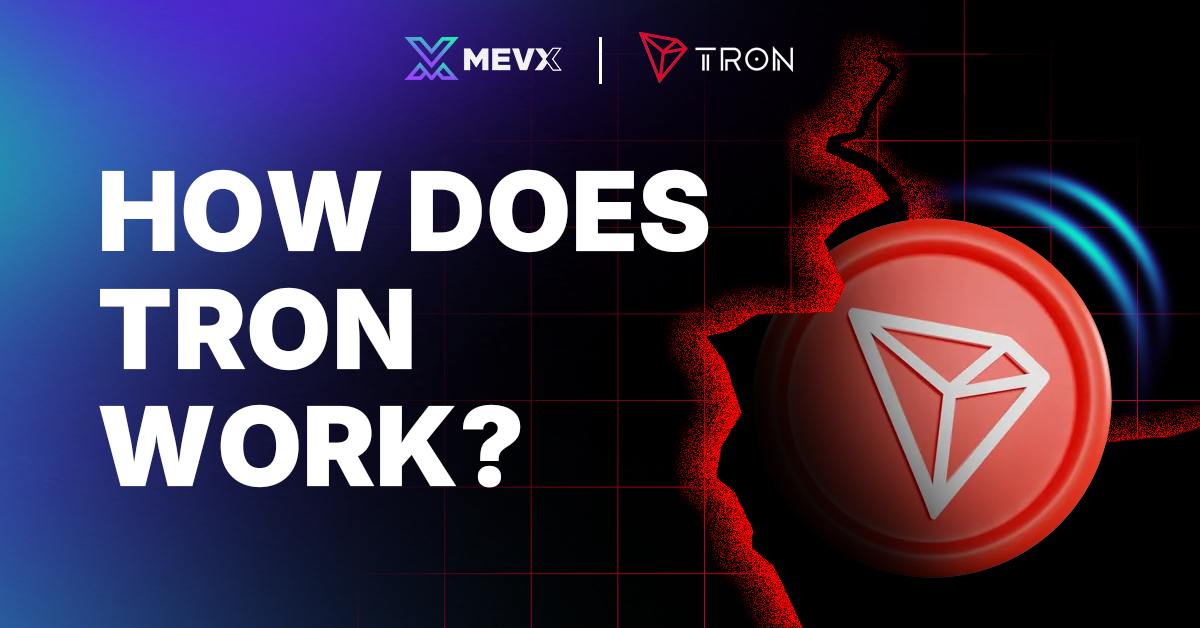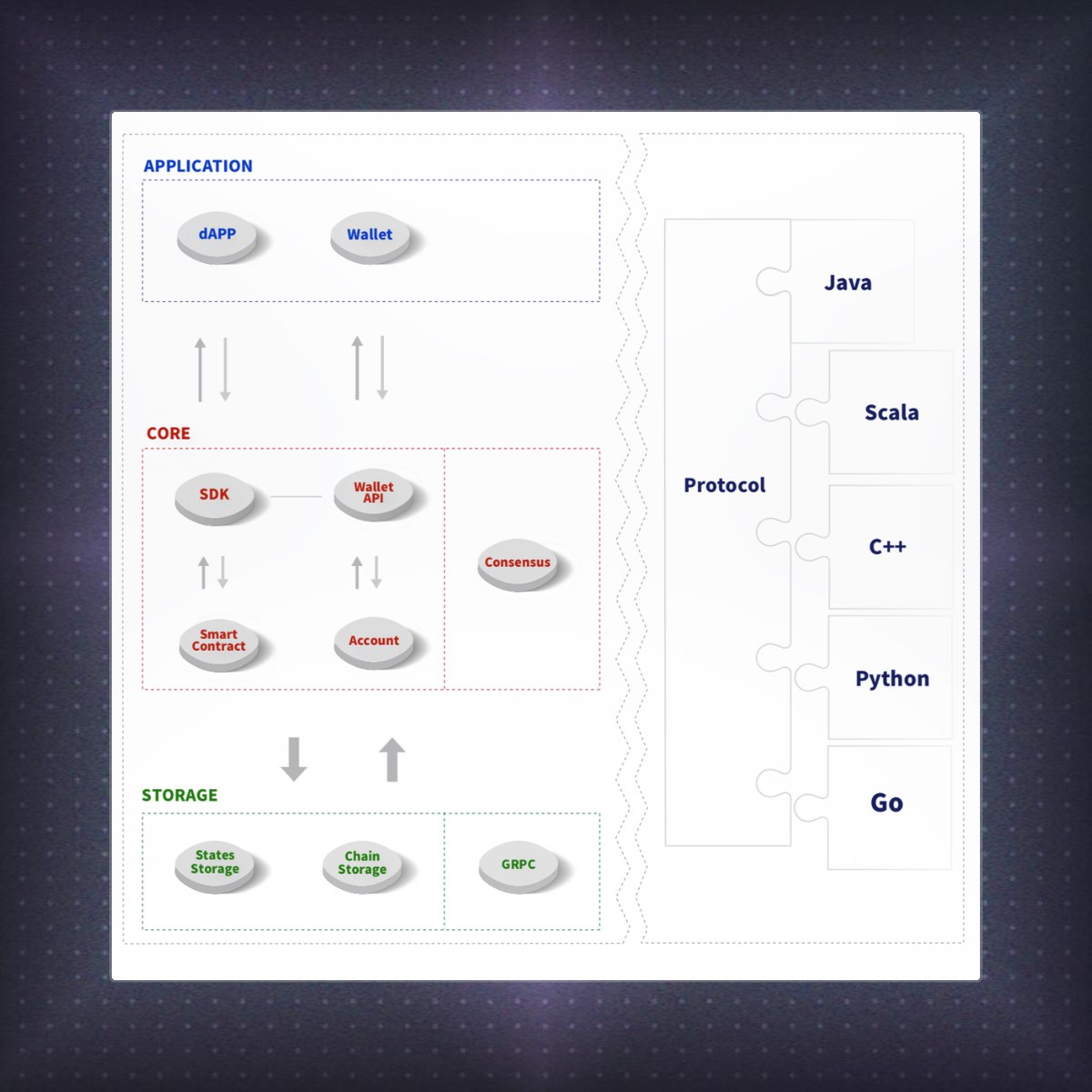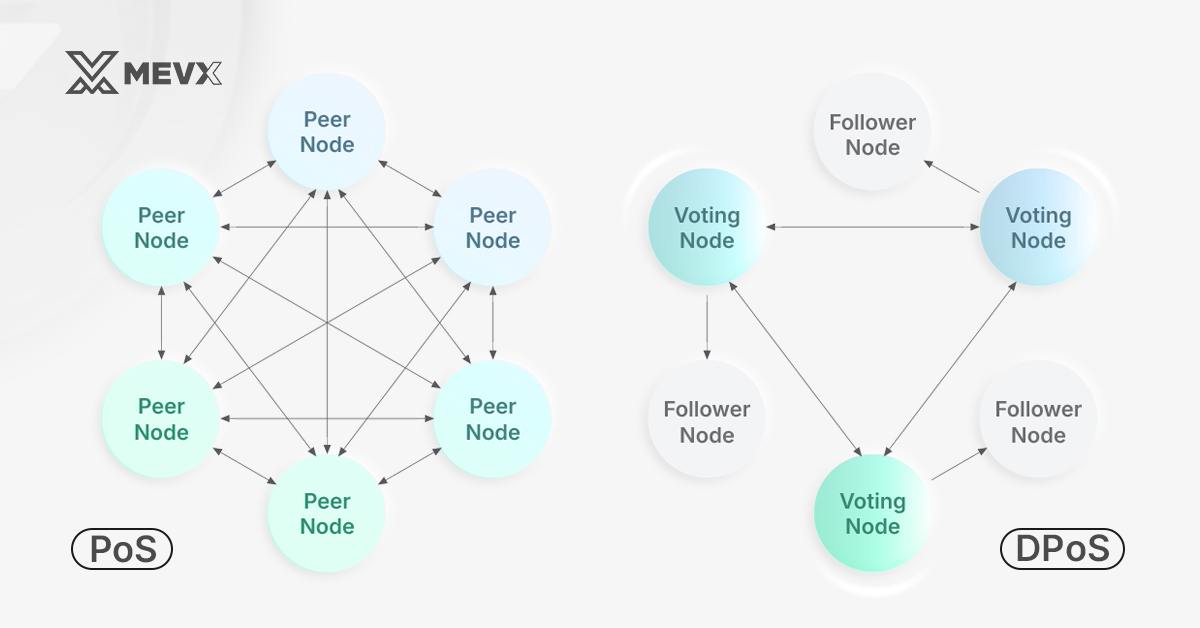Main Takeaways
- The article provides a detailed explanation of TRON’s architecture, focusing on its three-layer structure.
- It examines TRON’s Delegated Proof of Stake (DPoS) consensus mechanism.
- The article also discusses TRON’s smart contracts and its growing dApp ecosystem.
- The TRON Virtual Machine (TVM) is introduced, highlighting its compatibility with Ethereum’s codebase.
- TRX’s role in the TRON network is explained, focusing on its use for transaction fees, smart contract execution, and governance participation through staking.

How Does TRON Work?
Introduction
Building on the foundational concepts discussed in our previous article on What is TRON?, this article explores how TRON works by diving into TRON’s architecture, consensus mechanism, and growing ecosystem.
TRON Blockchain Architecture
TRON’s blockchain is built on a three-layer architecture that enhances its performance and scalability:
Storage Layer: This layer manages both the blockchain’s data and the state data of smart contracts. It ensures that all information is securely stored and easily retrievable, supporting TRON’s high transaction speed.
Core Layer: The core layer is responsible for the logic and protocols that govern the blockchain. It processes instructions from smart contracts and handles network operations, including consensus and validation. This layer uses several programming languages, such as Java, C++, and Python. It also supports TRON’s delegated proof of stake (DPoS) consensus mechanism.
Application Layer: This layer enables developers to build decentralized applications (dApps) and smart contracts. It’s where TRON interacts with external systems and users, making it essential for the development of dApps and decentralized services.

Demonstration of TRON’s architecture
Consensus Mechanism: Delegated Proof of Stake (DPoS)
TRON employs a Delegated Proof of Stake (DPoS) consensus mechanism, which ensures fast and efficient transaction validation. Unlike Proof of Work (PoW), DPoS is faster and more energy-efficient.
In TRON’s DPoS system, 27 Super Representatives (SRs) are elected by token holders to validate transactions and create new blocks. By limiting the number of SRs, TRON can process transactions more quickly as they reach a consensus faster.
Since these SRs are chosen through a voting system, underperforming or malicious representatives can be replaced. This maintains the decentralization and security of the TRON network.

PoS vs. DPos
Smart Contracts and dApps on TRON
Smart contracts in the TRON ecosystem enable automated, secure, and transparent execution of agreements without intermediaries. These smart contracts are pivotal to the platform’s decentralized applications (dApps), which are rapidly growing in number. TRON’s appeal to developers comes from its scalability and low transaction fees. This allows them to build a wide range of dApps—from DeFi platforms to gaming and social media applications. The growing dApp market on TRON has attracted significant developer interest, making it a competitive blockchain for decentralized solutions.
TRON Virtual Machine (TVM)
The TRON Virtual Machine (TVM) is a secure and highly efficient execution environment designed to facilitate the operation of smart contracts on the TRON network. TVM is originally forked from Ethereum Virtual Machine (EVM), meaning developers can easily port their applications from Ethereum to TRON without major modifications. This compatibility makes it attractive for developers looking for a more scalable and cost-effective solution while leveraging the existing Ethereum codebase.
Unlike Ethereum’s EVM, TVM focuses on providing a more resource-efficient environment with faster execution times and lower fees. This makes it highly competitive in the dApp space.
TRX and Network Economics
TRX, the native cryptocurrency of TRON, plays a critical role in the network’s economy. Users use it to pay transaction fees, execute smart contracts, and participate in network governance through staking. In TRON’s system, users can also freeze TRX to gain bandwidth and energy. The energy and bandwidth are used to process transactions and run smart contracts without incurring fees. This resource management model ensures that the network remains cost-efficient and scalable while encouraging users to participate in staking and governance.
Use Cases and Applications of TRON
TRON’s versatility has led to a variety of real-world applications across several sectors:
Gaming: TRON’s blockchain supports decentralized gaming platforms, enabling players to interact and trade digital assets directly, without relying on centralized platforms.
DeFi: TRON has emerged as a popular platform for decentralized finance (DeFi) applications, offering low-cost, fast transactions for lending, borrowing, and yield farming.
Entertainment: TRON’s focus on decentralizing content distribution makes it ideal for entertainment platforms where users can directly access digital content without intermediaries, providing a fair revenue-sharing model for creators.
Conclusion
TRON’s three-layer architecture, robust DPoS consensus mechanism, and focus on decentralization make it an efficient, scalable blockchain for decentralized applications and content sharing. By supporting fast, low-cost transactions and offering developer-friendly tools, TRON continues to gain traction as a competitive alternative to other blockchains, particularly in the entertainment and DeFi sectors. As TRON’s ecosystem grows, it remains a promising platform for developers and users looking to explore the future of decentralized content and applications.
Share on Social Media:
